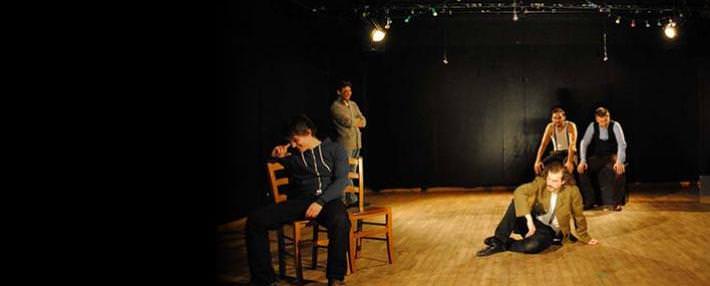Stanislavski’s Method

History
Stanislavski grew up with a privileged background, he was a member of one of the richest families in all of Russia. Before the Communist Revolution, Stanislavski used his families considerable wealth to experiment creatively with the theatre (who owned two theatres). His family did not encourage his theatrical activities so until the age of 33 he only appeared on stage as an amateur. He refused to go to university, instead opting to work in his family business but eventually relented to attend the Moscow Theatre School.
He left two weeks into the course, disappointed with the approach taught.
Instead, Stanislavski poured himself into the Maly Theatre, the birthplace of Russian Psychological Realism after the break-out practises of Pushkin and Shchepkin in the 19th Century. Other artists to influence Stanislavski included Tommaso Salvini as Othello, and Ernesto Rossi as Hamlet. They were straightforward actors with clear-realistic goals to their approach and performance.
System
The system itself is hoping to embody the “art of experiencing”, which should help produce subconscious actions and experiences on stage. In rehearsal, the actor should search for truth to his actions – why a character acts the way he does, what motivates him to pursue different paths, what desire does he have from an engagement etc.
Stanislavski argued that an actor must feel how the character does every time they go on stage. To this extent, the art took on a highly rigorous and psychological frame that served to do away with Classical acting, focussed on projection and dramatic actions. Stanislavski called the latter, the “art of representation” – the idea that an actor is just putting on an emotion, instead of being immersed in it.
Magic “if”
What if you were the person you’re trying to portray in that dire situation? – What would the consequences be?
The system is primarily based on asking acting questions to do with your role. Understanding the nuanced layers of your character in a deeply engrained way; comparably with your own. The situation you find yourself in would be described as the ‘Given Circumstances’. That is the position that your life has wound up to being; it was fate some may say (You could even describe it as ‘Given’ by the playwright, director etc.). So, reacting in a way that is suitable to the role’s directive and losing your own circumstances on stage is imperative to the approach.
The preparation for a performance will involve Inner Objects. The inner objects of a character help the actor to maintain a sustained level of attention towards the dramatic world of his/her character. As you prepare and delve into the characters through rehearsal, this level of attention will change from being patchy (missed-lines, outside influences, notes, awkwardness around new people etc.) into a strong, bold feeling that embodies an actor “experiencing a role”.
The action of a character is supremely important as well. This is your desire; your action will determine why you are entering the scene and what you are setting out to do based around your given circumstances. Breaking the script up into ‘Bits’ will allow for a dynamic range of desires across the play and will, hopefully, generate content which will compel the audience into believing in the character.
The method of Physical action was something Stanislavski experimented with later in his career and looked to build on how a character could be found. Devising multiple improvisational scenarios for which the character can discovered in, this system looked to expand the actors knowledge of who he/she was playing internally as well as externally. In the moment, the character might fly off the handle because of how a situation has riled the tensions in the room and as an actor, you might not have expected that to have occurred. It did, and you can decipher that down into what makes the character tick and why.
The Moscow Arts Theatre became a forum for these experimental ideas and with due course, the whole world of acting slowly became in awe over the universal truths this method aimed to teach players. In the modern age, many other methods have since been influenced by Stanislavski’s technique and that whole process remains a cornerstone for the education of performers and the continual growth among actors.
There has only been very few highly reputable theatre makers that everybody in the industry has heard of – this can be debated but along with Shakespeare, Moliere and Andrew Lloyd Webber, Stanislavski can rest assured knowing he changed the course of Theatre for the better.

